An Insight into All Tested Small Molecules against Fusarium oxysporum f. sp. Albedinis: A Comparative Review
Abstract
:1. Introduction
2. Pyrazole- and Imidazole-Based Derivatives
3. β-Keto-enol Derivatives
- a
- β-Keto-enol Pyridine and Furan Derivatives
- b
- (Z)-3(3-bromophenyl)-1-(1,5-dimethyl-1H-pyrazol-3yl)-3-hydroxyprop-2-en-1-one derivatives
- c
- β-Keto-enol pyrazolic compounds
4. Imidazothiazole Derivatives
5. Pyrazolic Compounds
6. Quinoxalines
7. Benzimidazole-1,2,3-triazole Hybrid Molecules
8. N,N′-Bipyrazole Piperazine Derivatives
9. Bipyrazolic Tripodal Derivatives
10. Schiff Base Derivatives
11. Amino Acids Pyrazole Compounds
12. Comparison Using Structure–Activity Relationship
13. Conclusions
Funding
Acknowledgments
Conflicts of Interest
References
- Ibrahim, E.B.; Mohamed, M.; Rafik, B. Bayoud disease of date palm in Algeria: History, epidemiology and integrated disease management. Afr. J. Biotechnol. 2015, 14, 542–550. [Google Scholar] [CrossRef] [Green Version]
- Bouissil, S.; Guérin, C.; Roche, J.; Dubessay, P.; Alaoui-Talibi, E.; Pierre, G.; Michaud, P.; Mouzeyar, S.; Delattre, C.; El Modafar, C. Induction of Defense Gene Expression and the Resistance of Date Palm to Fusarium oxysporum f. sp. Albedinis in Response to Alginate Extracted from Bifurcaria bifurcata. Mar. Drugs 2022, 20, 88. [Google Scholar] [PubMed]
- M’Hammed, E.; Fatiha, D.; Ayada, D.; Said, B.; Mohamed, K. Catalytic and synthesis of new compound based on geranium oil. Egyp. J. Chem. 2021, 64, 7341–7346. [Google Scholar] [CrossRef]
- Belaidi, H.; Toumi-Benali, F.; Benzohra, I.E. Biocontrol of bayoud disease (Fusarium oxysporum f. sp. albedinis) on deglet-nour variety of date palm (Phoenix dactylifera L.) in south western oases of Algeria. Agric. Sci. Digest 2021, 41, 450–454. [Google Scholar] [CrossRef]
- Komeil, D.A.; Abdalla, M.Y.; El-Bebany, A.F.; Basyony, A.B.A. Resistance marker detection in ten date palm cultivars to the wilt pathogen, Fusarium oxysporum. Asian J. Plant Sci. 2021, 20, 363–369. [Google Scholar] [CrossRef]
- Tantaoui, A.; Ouinten, M.; Geiger, J.P.; Fernandez, D. Characterization of a single clonal lineage of Fusarium oxysporum f. sp. albedinis causing Bayoud disease of date palm in Morocco. Phytopathology 1996, 86, 787–792. [Google Scholar] [CrossRef] [Green Version]
- Khalil, N.M.; Ali, H.M.; Ibrahim, A.E. Biochemical Activity of Propolis Alcoholic Extracts against Fusarium oxysporum hm89. Egyp. J. Bot. 2022, 62, 197–212. [Google Scholar] [CrossRef]
- Shalaby, M.G.; Al-Hossainy, A.F.; Abo-Zeid, A.M.; Mobark, H.; Mahmoud, Y.A.G. Synthesis, characterization, physicochemical properties, and in-vitro anti-bacterial evaluation for doped Fe-Fusarium. J. Mol. Str. 2022, 1259, 132643. [Google Scholar] [CrossRef]
- Hallasgo, A.M.; Hauser, C.; Steinkellner, S.; Hage-Ahmed, K. Single and coinoculation of Serendipita herbamans with arbuscular mycorrhizal fungi reduces Fusarium wilt in tomato and slows disease progression in the long-term. Biol. Control 2022, 168, 104876. [Google Scholar] [CrossRef]
- Sedra, M.; Lazrek, B.H. Fusarium oxysporum f. sp. Albedinis Toxin Characterization and Use for Selection of Resistant Date Palm to Bayoud Disease; Springer: Cham, Switzerland, 2011; pp. 253–270. [Google Scholar]
- Picot, S.; Beugnet, F.; Leboucher, G.; Bienvenu, A.-L. Drug resistant parasites and fungi from a one-health perspective: A global concern that needs transdisciplinary stewardship programs. One Health 2022, 14, 100368. [Google Scholar] [CrossRef]
- Bankaitis, V.A.; Tripathi, A.; Chen, X.-R.; Igumenova, T.I. New strategies for combating fungal infections: Inhibiting inositol lipid signaling by targeting Sec14 phosphatidylinositol transfer proteins. Adv. Biol. Reg. 2022, 84, 100891. [Google Scholar] [CrossRef] [PubMed]
- Alarjani, K.M.; Huessien, D.; Rasheed, R.A.; Kalaiyarasi, M. Green synthesis of silver nanoparticles by Pisum sativum L. (pea) pod against multidrug resistant foodborne pathogens. J. King Saud Univ. Sci. 2022, 34, 101897. [Google Scholar] [CrossRef]
- Green, R.M.; Bicker, K.L. Development of an Anti-Biofilm Screening Technique Leads to the Discovery of a Peptoid with Efficacy against Candida albicans. ACS Infect. Diseas. 2022, 8, 310–320. [Google Scholar] [CrossRef] [PubMed]
- Vanzolini, T.; Bruschi, M.; Rinaldi, A.C.; Magnani, M.; Fraternale, A. Multitalented Synthetic Antimicrobial Peptides and Their Antibacterial, Antifungal and Antiviral Mechanisms. Int. J. Mol. Sci. 2022, 23, 545. [Google Scholar] [CrossRef] [PubMed]
- Abrigach, F.; Rokni, Y.; Takfaoui, A.; Khoutoul, M.; Doucet, H.; Asehraou, A.; Touzani, R. In vitro screening, homology modeling and molecular docking studies of some pyrazole and imidazole derivatives. Biomed. Pharmacother. 2018, 103, 653–661. [Google Scholar] [CrossRef] [PubMed]
- Madany, N.M.K.; Shehata, M.R.; Mohamed, A.S. Ovothiol—A isolated from sea urchin eggs suppress oxidative stress, inflammation, and dyslipidemia resulted in restoration of liver activity in cholestatic rats. Biointerf. Res. Appl. Chem. 2022, 12, 8152–8162. [Google Scholar]
- Bulut, M.; Çelebi Sezer, Y.; Ceylan, M.M.; Alwazeer, D.; Koyuncu, M. Hydrogen-rich water can reduce the formation of biogenic amines in butter. Food Chem. 2022, 384, 132613. [Google Scholar] [CrossRef]
- Dantas, T.S.; de Oliveira, A.M.; Ferreira, M.R.A.; Soares, L.A.L. Therapeutic potential of croton blanchetianus for the treatment of gastric ulcers: A brief review. Biointerf. Res. Appl. Chem. 2022, 12, 8219–8230. [Google Scholar]
- Pakornchote, T.; Ektarawong, A.; Sukserm, A.; Pinsook, U.; Bovornratanaraks, T. Presence and absence of intrinsic magnetism in graphitic carbon nitrides designed through C–N–H building blocks. Sci. Rep. 2022, 12, 2343. [Google Scholar] [CrossRef]
- Teng, Q.-H.; Sun, G.-X.; Luo, S.-Y.; Wang, K.; Liang, F.-P. Design, syntheses and antitumor activities evaluation of 1,5-diaryl substituted pyrazole secnidazole ester derivatives. J. Heter. Chem. 2021, 58, 1656–1664. [Google Scholar] [CrossRef]
- Yang, Z.; Fang, Y.; Kim, J.-M.; Lee, K.-T.; Park, H. Synthesis of halogenated 1,5-diarylimidazoles and their inhibitory effects on lps-induced pge2 production in raw 264.7 cells. Molecules 2021, 26, 6093. [Google Scholar] [CrossRef] [PubMed]
- Mohamady, S.; Kralt, B.; Samwel, S.K.; Taylor, S.D. Efficient One-Pot, Two-Component Modular Synthesis of 3,5-Disubstituted Pyrazoles. ACS Omega 2018, 3, 15566–15574. [Google Scholar] [CrossRef] [PubMed]
- Radi, S.; Tighadouini, S.; Feron, O.; Riant, O.; Bouakka, M.; Benabbes, R.; Mabkhot, Y.N. Synthesis of Novel beta-Keto-Enol Derivatives Tethered Pyrazole, Pyridine and Furan as New Potential Antifungal and Anti-Breast Cancer Agents. Molecules 2015, 20, 20186–20194. [Google Scholar] [CrossRef] [PubMed] [Green Version]
- Tighadouini, S.; Benabbes, R.; Tillard, M.; Eddike, D.; Haboubi, K.; Karrouchi, K.; Radi, S. Synthesis, crystal structure, DFT studies and biological activity of (Z)-3-(3-bromophenyl)-1-(1,5-dimethyl-1H-pyrazol-3-yl)-3-hydroxyprop-2-en-1-one. Chem. Cent. J. 2018, 12, 122. [Google Scholar] [CrossRef] [PubMed]
- Tighadouini, S.; Radi, S.; Abrigach, F.; Benabbes, R.; Eddike, D.; Tillard, M. Novel β-keto-enol Pyrazolic Compounds as Potent Antifungal Agents. Design, Synthesis, Crystal Structure, DFT, Homology Modeling, and Docking Studies. J. Chem. Inf. Model. 2019, 59, 1398–1409. [Google Scholar] [CrossRef]
- Tighadouini, S.; Radi, S.; Benabbes, R.; Youssoufi, M.H.; Shityakov, S.; El Massaoudi, M.; Garcia, Y. Synthesis, Biochemical Characterization, and Theoretical Studies of Novel beta-Keto-enol Pyridine and Furan Derivatives as Potent Antifungal Agents. ACS Omega 2020, 5, 17743–17752. [Google Scholar] [CrossRef]
- Koudad, M.; El Hamouti, C.; Elaatiaoui, A.; Dadou, S.; Oussaid, A.; Abrigach, F.; Pilet, G.; Benchat, N.; Allali, M. Synthesis, crystal structure, antimicrobial activity and docking studies of new imidazothiazole derivatives. J. Iran. Chem. Soc. 2019, 17, 297–306. [Google Scholar] [CrossRef]
- Kassab, R.M.; Gomha, S.M.; Muhammad, Z.A.; El-Khouly, A.S. Synthesis, biological profile, and molecular docking of some new bis-imidazole fused templates and investigation of their cytotoxic potential as anti-tubercular and/or anticancer prototypes. Med. Chem. 2021, 17, 875–886. [Google Scholar] [CrossRef]
- Haddad, Y.; Remes, M.; Adam, V.; Heger, Z. Toward structure-based drug design against the epidermal growth factor receptor (EGFR). Drug Discov. Today 2021, 26, 289–295. [Google Scholar] [CrossRef]
- Abrigach, F.; Karzazi, Y.; Benabbes, R.; El Youbi, M.; Khoutoul, M.; Taibi, N.; Karzazi, N.; Benchat, N.; Bouakka, M.; Saalaoui, E.; et al. Synthesis, biological screening, P.O.M., and 3D-QSAR analyses of some novel pyrazolic compounds. Med. Chem. Res. 2017, 26, 1784–1795. [Google Scholar] [CrossRef]
- Bandgar, B.P.; Gawande, S.S.; Bodade, R.G.; Gawande, N.M.; Khobragade, C.N. Synthesis and biological evaluation of a novel series of pyrazole chalcones as anti-inflammatory, antioxidant and antimicrobial agents. Bioorg. Med. Chem. 2009, 17, 8168–8173. [Google Scholar] [CrossRef] [PubMed]
- Alegaon, S.G.; Alagawadi, K.R.; Garg, M.K.; Dushyant, K.; Vinod, D. 1,3,4-Trisubstituted pyrazole analogues as promising anti-inflammatory agents. Bioorg. Chem. 2014, 54, 51–59. [Google Scholar] [CrossRef] [PubMed]
- Li, Y.R.; Li, C.; Liu, J.C.; Guo, M.; Zhang, T.Y.; Sun, L.P.; Zheng, C.J.; Piao, H.R. Synthesis and biological evaluation of 1,3-diaryl pyrazole derivatives as potential antibacterial and anti-inflammatory agents. Bioorg. Med. Chem. Lett. 2015, 25, 5052–5057. [Google Scholar] [CrossRef] [PubMed]
- Khan, M.F.; Alam, M.M.; Verma, G.; Akhtar, W.; Akhter, M.; Shaquiquzzaman, M. The therapeutic voyage of pyrazole and its analogs: A review. Eur. J. Med. Chem. 2016, 120, 170–201. [Google Scholar] [CrossRef]
- Alam, J.; Alam, O.; Alam, P.; Naim, M.J. A Review on Pyrazole chemical entity and Biological Activity. Inter. J. Pharm. Sci. Res. 2015, 6, 1433–1442. [Google Scholar]
- Chovatia, P.T.; Akabari, J.D.; Kachhadia, P.K.; Zalavadia, P.D.; Joshi, H.S. Synthesis and selective antitubercular and antimicrobial inhibitory activity of 1-acetyl-3,5-diphenyl-4,5-dihydro-(1h)-pyrazole derivatives. J. Serb. Chem. Soc. 2006, 71, 713–720. [Google Scholar] [CrossRef]
- Khanage, S.G.; Mohite, P.B.; Pandhare, R.B.; Raju, S.A. Microwave Assisted Synthesis of 1-[5-(Substituted Aryl)-1H-Pyrazol-3-yl]-3,5-Diphenyl-1H-1,2,4-Triazole as Antinociceptive and Antimicrobial Agents. Adv. Pharm. Bull. 2014, 4, 105–112. [Google Scholar]
- Hamada, N.M.M.; Abdo, N.Y.M. Synthesis, characterization, antimicrobial screening and free-radical scavenging activity of some novel substituted pyrazoles. Molecules 2015, 20, 10468–10486. [Google Scholar] [CrossRef] [Green Version]
- Elshaier, Y.A.; Barakat, A.; Al-Qahtany, B.M.; Al-Majid, A.M.; Al-Agamy, M.H. Synthesis of Pyrazole-Thiobarbituric Acid Derivatives: Antimicrobial Activity and Docking Studies. Molecules 2016, 21, 1337. [Google Scholar] [CrossRef] [Green Version]
- Kucukguzel, S.G.; Coskun, I.; Aydin, S.; Aktay, G.; Gursoy, S.; Cevik, O.; Ozakpinar, O.B.; Ozsavci, D.; Sener, A.; Kaushik-Basu, N.; et al. Synthesis and characterization of celecoxib derivatives as possible anti-inflammatory, analgesic, antioxidant, anticancer and anti-HCV agents. Molecules 2013, 18, 3595–3614. [Google Scholar] [CrossRef] [Green Version]
- El Kodadi, M.; Benamar, M.; Ibrahim, B.; Zyad, A.; Malek, F.; Touzani, R.; Ramdani, A.; Melhaoui, A. New synthesis of two tridentate bipyrazolic compounds and their cytotoxic activity tumor cell lines. Nat. Prod. Res. 2007, 21, 947–952. [Google Scholar] [CrossRef] [PubMed]
- Insuasty, B.; Tigreros, A.; Orozco, F.; Quiroga, J.; Abonía, R.; Nogueras, M.; Sanchez, A.; Cobo, J. Synthesis of novel pyrazolic analogues of chalcones and their 3-aryl-4-(3-aryl-4,5-dihydro-1H-pyrazol-5-yl)-1-phenyl-1H-pyrazole derivatives as potential antitumor agents. Bioorg. Med. Chem. 2010, 18, 4965–4974. [Google Scholar] [CrossRef] [PubMed]
- Yahyi, A.; Et-Touhami, A.; Yahyaoui, R.; Touzani, R. Synthesis, Characterization by Means of I.R., 1H, 13C-N.M.R. and Biological Investigations on New Diorganotin Carboxylic Acid Derivatives. Lett. Drug Des. Discov. 2010, 7, 534–540. [Google Scholar] [CrossRef]
- Ajay Kumar, K.; Jayaroopa, P. Pyrazoles: Synthetic strategies and their pharmaceutical applications-an overview. Int. J. Pharm. Tech. Res. 2013, 5, 1473–1486. [Google Scholar]
- Kucukguzel, S.G.; Senkardes, S. Recent advances in bioactive pyrazoles. Eur. J. Med. Chem. 2015, 97, 786–815. [Google Scholar] [CrossRef]
- Küçükgüzel, Ş.G.; Çıkla-Süzgün, P. Recent advances bioactive 1,2,4-triazole-3-thiones. Eur. J. Med. Chem. 2015, 97, 830–870. [Google Scholar] [CrossRef]
- Waring, M.J.; Ben-Hadda, T.; Kotchevar, A.T.; Ramdani, A.; Touzani, R.; El Kadiri, S.; Hakkou, A.; Bouakka, M.; Ellis, T. 2,3-Bifunctionalized quinoxalines: Synthesis, DNA interactions and evaluation of anticancer, anti-tuberculosis and antifungal activity. Molecules 2002, 7, 641–656. [Google Scholar] [CrossRef]
- Ouahrouch, A.; Ighachane, H.; Taourirte, M.; Engels, J.W.; Sedra, M.H.; Lazrek, H.B. Benzimidazole-1,2,3-triazole hybrid molecules: Synthesis and evaluation for antibacterial/antifungal activity. Arch. Pharm. 2014, 347, 748–755. [Google Scholar] [CrossRef] [Green Version]
- Radi, S.; Toubi, Y.; Hakkou, A.; Souna, F.; Himri, I.; Bouakka, M. Synthesis, Antibacterial and Antifungal Activities of Novel N,N’-bipyrazole Piperazine Derivatives. Lett. Drug Des. Discov. 2012, 9, 853–857. [Google Scholar] [CrossRef]
- Klenc, J.; Raux, E.; Barnes, S.; Sullivan, S.; Duszynska, B.; Bojarski, A.J.; Strekowski, L. Synthesis of 4-Substituted 2-(4-Methylpiperazino) pyrimidines and Quinazoline Analogs as Serotonin 5-HT 2A Receptor Ligands. J. Heter. Chem. 2009, 46, 1259–1265. [Google Scholar]
- Radi, S.; Toubi, Y.; Hamdani, I.; Hakkou, A.; Souna, F.; Himri, I.; Bouakka, M. Synthesis, antibacterial and antifungal activities of some new bipyrazolic tripodal derivatives. Res. J. Chem. Sci. 2012, 2, 40–44. [Google Scholar]
- Toubi, Y.; Abrigach, F.; Radi, S.; Souna, F.; Hakkou, A.; Alsayari, A.; Muhsinah, A.B.; Mabkhot, Y.N. Synthesis, antimicrobial screening, homology modeling, and molecular docking studies of a new series of Schiff base derivatives as prospective fungal inhibitor candidates. Molecules 2019, 24, 3250. [Google Scholar] [CrossRef] [PubMed] [Green Version]
- Boussalah, N.; Touzani, R.; Souna, F.; Himri, I.; Bouakka, M.; Hakkou, A.; Ghalem, S.; El Kadiri, S. Antifungal activities of amino acid ester functional pyrazolyl compounds against Fusarium oxysporum f. sp. albedinis and Saccharomyces cerevisiae yeast. J. Saudi Chem. Soc. 2013, 17, 17–21. [Google Scholar] [CrossRef] [Green Version]
- Xing, A.; Zeng, D.; Chen, Z. Synthesis, crystal structure and antioxidant activity of butylphenol Schiff bases: Experimental and DFT study. J. Mol. Str. 2022, 1253, 132209. [Google Scholar] [CrossRef]
- Aljamali, N.M.; Jawad, S.F. Preparation, spectral characterization, thermal study, and antifungal assay of (Formazane-mefenamic acid)–derivatives. Egyp. J. Chem. 2022, 65, 449–457. [Google Scholar] [CrossRef]
- Jambulingam, M.; AnandaThangadurai, S.; Vijayabaskaran, M. Designing and Synthesis of Some Transition Metal Complexes Derived from Schiff Bases for Anti-Bacterial Activity. J. Med. Chem. Sci. 2022, 5, 10–18. [Google Scholar]
- Mokhtari, P.; Mohammadnezhad, G. Anti-cancer properties and catalytic oxidation of sulfides based on vanadium (V) complexes of unprotected sugar-based Schiff-base ligands. Polyhedron 2022, 215, 115655. [Google Scholar] [CrossRef]
- Murakami, M.; Kouyama, T. Crystal structure of squid rhodopsin. Nature 2008, 453, 363–367. [Google Scholar] [CrossRef]
- Saavedra, C.P.; Encinas, M.V.; Araya, M.A.; Pichuantes, S.E.; Vásquez, C.C. Biochemical characterization of a thermostable cysteine synthase from Geobacillus stearothermophilus V. Biochimie 2004, 86, 481–485. [Google Scholar] [CrossRef]
- Levitskiy, O.A.; Aglamazova, O.I.; Grishin, Y.K.; Nefedov, S.E.; Magdesieva, T.V. Corey-Chaykovsky cyclopropanation of dehydroalanine in the Ni(II) coordination environment: Electrochemical vs. chemical activation. Electrochim. Acta 2022, 409, 139980. [Google Scholar] [CrossRef]
- Shenoy, K.V.; Venugopal, P.P.; Reena Kumari, P.D.; Chakraborty, D. Anti-corrosion investigation of a new nitro veratraldehyde substituted imidazopyridine derivative Schiff base on mild steel surface in hydrochloric acid medium: Experimental, computational, surface morphological analysis. Mater. Chem. Phys. 2022, 281, 125855. [Google Scholar] [CrossRef]
- Hajri, A.K.; Jamoussi, B.; Albalawi, A.E.; Alhawiti, O.H.N.; Alsharif, A.A. Designing of modified ion-imprinted chitosan particles for selective removal of mercury (II) ions. Carbohydr. Polym. 2022, 286, 119207. [Google Scholar] [CrossRef] [PubMed]
- Takfaoui, A.; Zhao, L.; Touzani, R.; Soulé, J.-F.; Dixneuf, P.H.; Doucet, H. One pot Pd(OAc)2-catalysed 2,5-diarylation of imidazoles derivatives. Tetrahedron 2014, 70, 8316–8323. [Google Scholar] [CrossRef]
- Takfaoui, A.; Zhao, L.; Touzani, R.; Dixneuf, P.H.; Doucet, H. Palladium-catalysed direct diarylations of pyrazoles with aryl bromides: A one step access to 4,5-diarylpyrazoles. Tetrahedron Lett. 2014, 55, 1697–1701. [Google Scholar] [CrossRef]
- Wu, Z.B.; Park, H.Y.; Xie, D.W.; Yang, J.X.; Hou, S.T.; Shahzad, N.; Kim, C.K.; Yang, S. Synthesis, biological evaluation, and 3D-QSAR studies of N- (Substituted pyridine-4-yl)-1-(substituted phenyl)-5-trifluoromethyl- 1H- pyrazole-4-carboxamide derivatives as potential succinate dehydrogenase inhibitors. J. Agric. Food Chem. 2021, 69, 1214–1223. [Google Scholar] [CrossRef]
- Tighadouini, S.; Radi, S.; Garcia, Y. Selective chemical adsorption of Cd(II) on silica covalently decorated with a β-ketoenol-thiophene-furan receptor. Mol. Syst. Des. Eng. 2020, 5, 1037–1047. [Google Scholar] [CrossRef]
- Radi, S.; Tighadouini, S.; Bacquet, M.; Degoutin, S.; Dacquin, J.-P.; Eddike, D.; Tillard, M.; Mabkhot, Y.N. β-Keto-enol Tethered Pyridine and Thiophene: Synthesis, Crystal Structure Determination and Its Organic Immobilization on Silica for Efficient Solid-Liquid Extraction of Heavy Metals. Molecules 2016, 21, 888. [Google Scholar] [CrossRef] [Green Version]
- Radi, S.; Tighadouini, S.; Eddike, D.; Tillard, M.; Mabkhot, Y.N. Crystal Structure of (Z)-1-(1,5-dimethyl-1H-pyrazol-3-yl)-3-hydroxy-3-(4-methoxyphenyl)prop-2-en-1-one, C15H16N2O3. Z. Kristallogr. New Cryst. Struct. 2017, 232, 199–200. [Google Scholar] [CrossRef] [Green Version]
- Radi, S.; Tighadouini, S.; Eddike, D.; Tillard, M.; Mabkhot, Y.N. Crystal Structure of (Z)-1-(1,5-dimethyl-1H-pyrazol-3-yl)-3-hydroxy-3-phenylprop-2-en-1-one, C14H14N2O2. Z. Kristallogr. New Cryst. Struct. 2017, 232, 201–202. [Google Scholar]
- Radi, S.; Tighadouini, S.; Eddike, D.; Tillard, M.; Mabkhot, Y.N. Crystal Structure of (Z)-1-(1,5-dimethyl-1H-pyrazol-3-yl)-3-(4-ethoxyphenyl)-3-hydroxyprop-2-en-1-one, C16H18N2O3. Z. Kristallogr. New Cryst. Struct. 2017, 232, 207–208. [Google Scholar] [CrossRef] [Green Version]
- Radi, S.; Tighadouini, S.; Eddike, D.; Tillard, M.; Mabkhot, Y.N. Crystal Structure of (Z)-1-(1,5-dimethyl-1H-pyrazol-3-yl)-3-hydroxy-3-(p-toly)prop-2-en-1-one, C15H16N2O2. Z. Kristallogr. New Cryst. Struct. 2017, 232, 209–210. [Google Scholar] [CrossRef]
- Radi, S.; Tighadouini, S.; Eddike, D.; Tillard, M.; Mabkhot, Y.N. Crystal Structure of (Z)-3-hydroxy-3-(4-methoxyphenyl)-1-(pyridin-2-yl)prop-2-en-1-one, C15H13NO3. Z. Kristallogr. New Cryst. Struct. 2017, 232, 235–236. [Google Scholar] [CrossRef] [Green Version]
- Tighadouini, S.; Radi, S.; Ferbinteanu, M.; Garcia, Y. Highly Selective Removal of Pb(II) by a Pyridylpyrazole-β-ketoenol Receptor Covalently Bonded onto the Silica Surface. ACS Omega 2019, 4, 3954–3964. [Google Scholar] [CrossRef] [PubMed] [Green Version]
- Peng, Y.-H.; Liao, F.-Y.; Tseng, C.-T.; Kuppusamy, R.; Li, A.S.; Chen, C.H.; Fan, Y.S.; Wang, S.Y.; Wu, M.H.; Hsueh, C.C.; et al. Unique Sulfur-Aromatic Interactions Contribute to the Binding of Potent Imidazothiazole Indoleamine 2,3-Dioxygenase Inhibitors. J. Med. Chem. 2020, 63, 1642–1659. [Google Scholar] [CrossRef]
- Adole, V.A.; Jagdale, B.S.; Pawar, T.B.; Sagane, A.A. Ultrasound promoted stereoselective synthesis of 2,3-dihydrobenzofuran appended chalcones at ambient temperature. S. Afr. J. Chem. 2020, 73, 35–43. [Google Scholar] [CrossRef]
- Morigi, R.; Vitali, B.; Prata, C.; Palomino, R.A.N.; Graziadio, A.; Locatelli, A.; Rambald, M.; Leoni, A. Investigation on the effects of antimicrobial imidazo[2,1-b]Thiazole derivatives on the genitourinary microflora. Med. Chem. 2018, 14, 311–319. [Google Scholar] [CrossRef]
- Abdel-Wahab, B.F.; Khidre, R.E.; Awad, G.E.A. Design and Synthesis of Novel 6-(5-Methyl-1H-1,2,3-triazol-4-yl)-5-[(2-(thiazol-2-yl)hydrazono)methyl]imidazo[2,1-b]thiazoles as Antimicrobial Agents. J. Heter. Chem. 2017, 54, 489–494. [Google Scholar] [CrossRef]
- Jallapally, A.; Addla, D.; Yogeeswari, P.; Sriram, D.; Kantevari, S. 2-Butyl-4-chloroimidazole based substituted piperazine-thiosemicarbazone hybrids as potent inhibitors of Mycobacterium tuberculosis. Bioorg. Med. Chem. Let. 2014, 24, 5520–5524. [Google Scholar] [CrossRef]
- Rani, N.; Sharma, A.; Gupta, G.K.; Singh, R. Imidazoles as potential antifungal agents: A review. Med. Chem. 2013, 13, 1626–1655. [Google Scholar] [CrossRef]
- Mohamed, H.A.; Abdel-Wahab, B.F. Synthetic access to imidazo[2,1-b]thiazoles. J. Sulf. Chem. 2012, 33, 589–604. [Google Scholar] [CrossRef]
- Abdel-Wahab, B.F.; Mohamed, H.A. Imidazobenzothiazoles: Synthesis and application. J. Sulf. Chem. 2012, 33, 335–349. [Google Scholar] [CrossRef]
- Touzani, R.; Ramdani, A.; Ben-Hadda, T.; El Kadiri, S.; Maury, O.; Le Bozec, H.; Dixneuf, P.H. Efficient synthesis of new nitrogen donor containing tripods under microwave irradiation and without solvent. Synth. Commun. 2001, 31, 1315–1321. [Google Scholar] [CrossRef]
- Lamsayah, M.; Khoutoul, M.; Abrigach, F.; Oussaid, A.; Touzani, R. Selective liquid-liquid extraction of fe(II) and cd(II) using n,n’-pyrazole bidentate ligands with theoretical study investigations. Separ. Sci. Tech. 2015, 50, 2170–2176. [Google Scholar]
- Khoutoul, M.; Abrigach, F.; Zarrouk, A.; Benchat, N.-E.; Lamsayah, M.; Touzani, R. New nitrogen-donnor pyrazole ligands for excellent liquid-liquid extraction of Fe2+ ions from aqueous solution, with theoretical study. Res. Chem. Interm. 2015, 41, 3319–3334. [Google Scholar] [CrossRef]
- Touzani, R.; Ben-Hadda, T.; El Kadiri, S.; Ramdani, A.; Maury, O.; Le Bozec, H.; Toupet, L.; Dixneuf, P.H. Solution, solid state structure and fluorescence studies of 2,3-functiolized quinoxalines: Evidebce for π-delocalized keto-enamine form with N-H..O intramolecular hydrogen bonds. New J. Chem. 2001, 25, 391–395. [Google Scholar] [CrossRef]
- Daoud, A.; Cheknane, A.; Touzani, R.; Hilal, H.S.; Boulouiz, A. Simulation of the Electrochemical Properties of Dye-Sensitized Solar Cells Based on Quinoxaline Dyes: Effects of Hydroxyl Group Numbers and Positions. J. Electr. Mater. 2021, 50, 5656–5663. [Google Scholar] [CrossRef]
- Bouabdallah, I.; Zidane, I.; Touzani, R.; Hacht, B.; Ramdani, A. Quinoxalines and tetraketones for metal cations extraction. Arkivoc 2006, 10, 77–81. [Google Scholar] [CrossRef] [Green Version]
- Tornøe, C.W.; Christensen, C.; Meldal, M. Peptidotriazoles on Solid Phase: [1,2,3]-Triazoles by Regiospecific Copper(I)-Catalyzed 1,3-Dipolar Cycloadditions of Terminal Alkynes to Azides. J. Org. Chem. 2002, 67, 3057–3064. [Google Scholar] [CrossRef]
- Rostovtsev, V.V.; Green, L.G.; Fokin, V.V.; Sharpless, K.B. A stepwise huisgen cycloaddition process: Copper(I)-catalyzed regioselective “ligation” of azides and terminal alkynes. Angew. Chem. Int. Ed. 2002, 41, 2565–2599. [Google Scholar] [CrossRef]
- Meldal, M.; Tornøe, C.W. Cu-Catalyzed Azide–Alkyne Cycloaddition. Chem. Rev. 2008, 108, 2952–3015. [Google Scholar] [CrossRef]
- Pradere, U.; Roy, V.; Mc Brayer, T.R.; Schinazi, R.F.; Agrofoglio, L.A. Preparation of ribavirin analogues by copper- and ruthenium-catalyzed azide-alkyne 1,3-dipolar cycloaddition. Tetrahedron 2008, 64, 9044–9051. [Google Scholar] [CrossRef] [PubMed]
- Al-Ghorbani, M.; Gouda, M.A.; Baashen, M.; Alharbi, O.; Almalki, F.A.; Ranganatha, L.V. Piperazine Heterocycles as Potential Anticancer Agents: A Review. Pharm. Chem. J. 2022. [Google Scholar] [CrossRef]
- Sanka, B.M.; Tadesse, D.M.; Bedada, E.T.; Mengesha, E.T.; Babu, G.N. Design, synthesis, biological screening and molecular docking studies of novel multifunctional 1,4-di (aryl/heteroaryl) substituted piperazine derivatives as potential antitubercular and antimicrobial agents. Bioorg. Chem. 2021, 119, 105568. [Google Scholar] [CrossRef] [PubMed]
- Desai, N.C.; Rupala, Y.M.; Khasiya, A.G.; Shah, K.N.; Pandit, U.P.; Khedkar, V.M. Synthesis, biological evaluation, and molecular docking study of thiophene-, piperazine-, and thiazolidinone-based hybrids as potential antimicrobial agents. J. Heter. Chem. 2021, 59, 75–87. [Google Scholar] [CrossRef]
- Harit, T.; Malek, F.; Ameduri, B. Fluorinated polymers based on pyrazole groups for fuel cell membranes. Eur. Polym. J. 2016, 79, 72–81. [Google Scholar] [CrossRef]
- Garbacia, S.; Hillairet, C.; Touzani, R.; Lavastre, O. New nitrogen-rich tripodal molecules based on bis(pyrazol-1-ylmethyl)amines with substituents modulating steric hindrances and electron density of donor sites. Collect. Czech. Chem. Commun. 2005, 70, 34–40. [Google Scholar] [CrossRef]
- Roh, S.-G.; Park, Y.-C.; Park, D.-K.; Kim, T.-J.; Jeong, J.H. Synthesis and characterization of a Zn(II) complex of a pyrazole-based ligand bearing a chiral L-alaninemethylester. Polyhedron 2001, 20, 1961–1965. [Google Scholar] [CrossRef]
- Scarpellini, M.; Wu, A.J.; Kampk, J.W.; Pecoraro, V.L. Corroborative models of the cobalt(II) inhibited Fe/Mn superoxide dismutases. Inorg. Chem. 2005, 44, 5001–5010. [Google Scholar] [CrossRef]
- Bouabdallah, I.; Touzani, R.; Zidane, I.; Ramdani, A. Synthesis of new tripodal ligand: N,N-bis[(1,5-dimethylpyrazol-3-yl)methyl]benzylamine. Catecholase activity of two series of tripodal ligands with some copper (II) salts. Catal. Commun. 2007, 8, 707–712. [Google Scholar] [CrossRef]
- Touzani, R.; Garbacia, S.; Lavastre, O.; Yadav, V.K.; Carboni, B. Efficient solution phase combinatorial access to a library of pyrazole- and triazole-containing compounds. J. Comb. Chem. 2003, 5, 375–378. [Google Scholar] [CrossRef]
- Touzani, R.; Vasapollo, G.; Scorrano, S.; Del Sole, R.; Manera, M.G.; Rella, R.; El Kadiri, S. New complexes based on tridentate bispyrazole ligand for optical gas sensing. Mater. Chem. Phys. 2011, 126, 375–380. [Google Scholar] [CrossRef]
- Boussalah, N.; Touzani, R.; Bouabdallah, I.; El Kadiri, S.; Ghalem, S. Oxidation catalytic properties of new amino acid based on pyrazole tripodal ligands. Int. J. Acad. Res. 2009, 1, 137–143. [Google Scholar]
- Boussalah, N.; Touzani, R.; Bouabdallah, I.; El Kadiri, S.; Ghalem, S. Synthesis, structure and catalytic properties of tripodal amino-acid derivatized pyrazole-based ligands. J. Mol. Catal. A Chem. 2009, 306, 113–117. [Google Scholar] [CrossRef]
- Spadoni, G.; Balsamini, C.; Bedini, A.; Duranti, E.; Tontini, A. Short synthesis of tryptophane and β-carboline derivatives by reaction of indoles with N-(diphenylmethylene)-α,β-didehydroamino acid esters. J. Heterocycl. Chem. 1992, 29, 305–309. [Google Scholar] [CrossRef]
- Zumbuehl, A.; Stano, P.; Sohrmann, M.; Dietiker, R.; Peter, M.; Carreira, E.M. Synthesis and investigation of tryptophan—Amphotericin B conjugates. ChemBioChem 2009, 10, 1617–1620. [Google Scholar] [CrossRef]
- Qian, A.; Zheng, Y.; Wang, R.; Wei, J.; Cui, Y.; Cao, X.; Yang, Y. Design, synthesis, and structure-activity relationship studies of novel tetrazole antifungal agents with potent activity, broad antifungal spectrum and high selectivity. Bioorg. Med. Chem. Lett. 2017, 28, 344–350. [Google Scholar] [CrossRef]
- Xiao, Z.P.; Ma, T.W.; Liao, M.L.; Feng, Y.T.; Peng, X.C.; Li, J.L.; Li, Z.P.; Wu, Y.; Luo, Q.; Deng, Y.; et al. Tyrosyl-tRNA synthetase inhibitors as antibacterial agents: Synthesis, molecular docking and structure-activity relationship analysis of 3-aryl-4-arylaminofuran-2(5H)-ones. Eur. J. Med. Chem. 2011, 46, 4904–4914. [Google Scholar] [CrossRef]
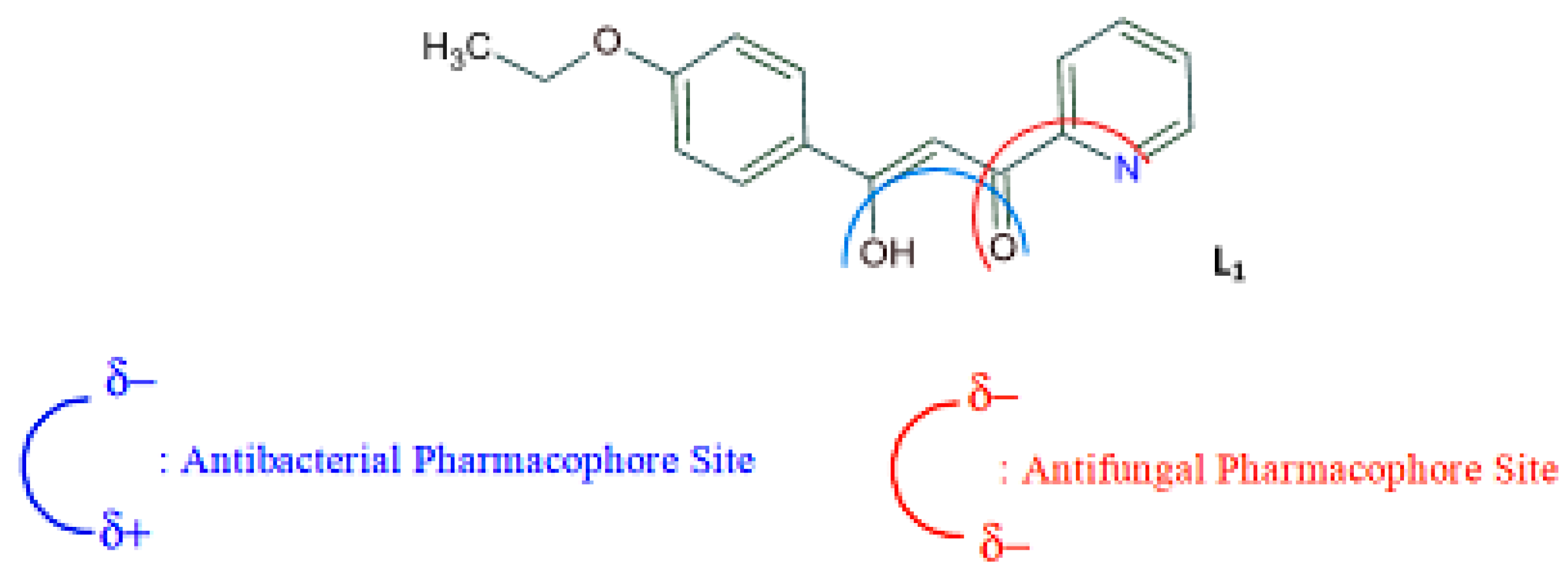
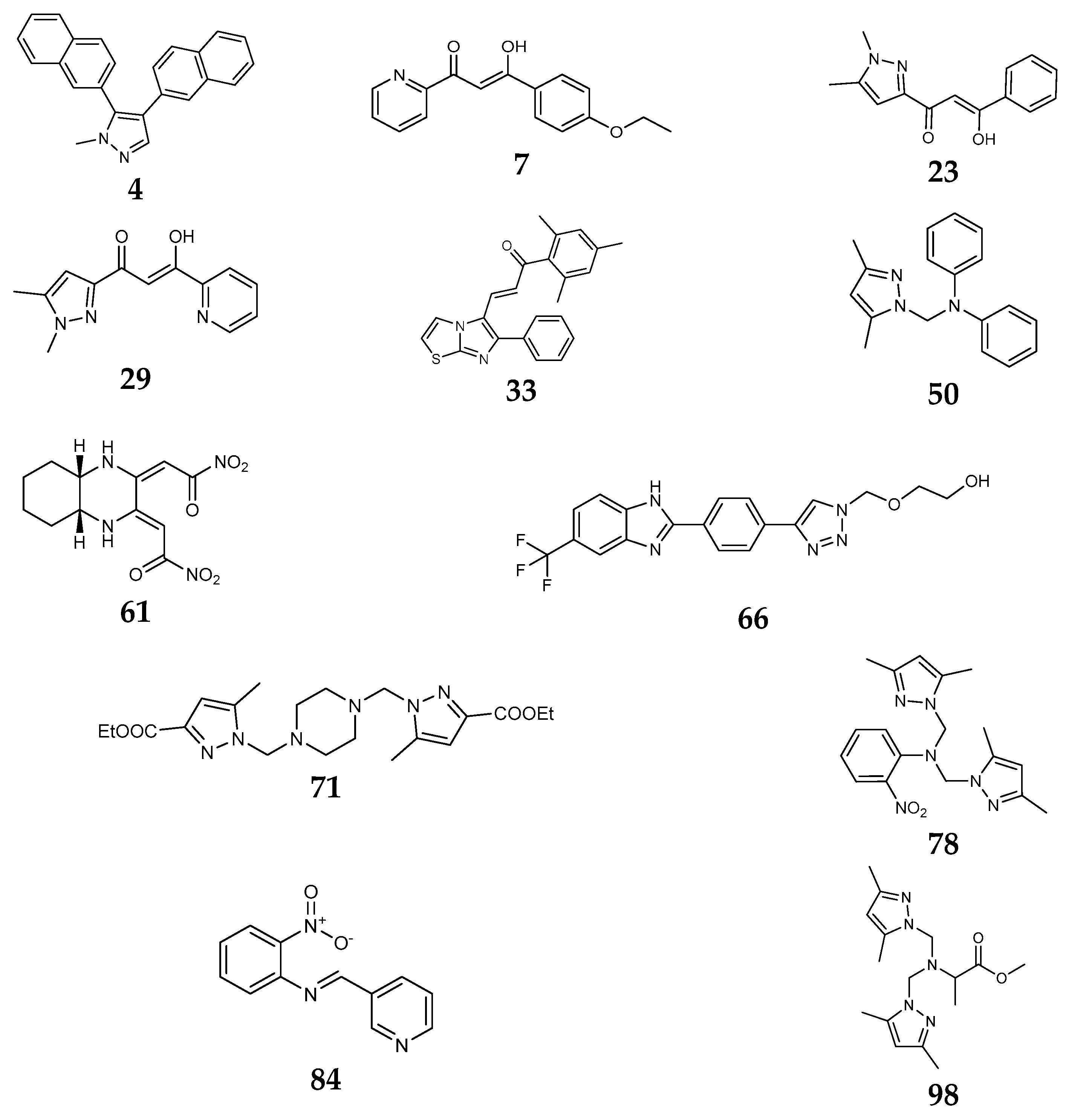
| ID. | Structure | IC50 | |
|---|---|---|---|
| μg/mL | μM | ||
| 1 |  | 110.9 | 299.4 |
| 2 |  | 153.2 | 538.8 |
| 3 |  | 165.1 | 509.1 |
| 4 |  | 99.1 | 256.4 |
| 5 |  | 114.7 | 378.3 |
| 6 |  | 194.5 | 667.1 |
| ID | Structure | IC50 | |
|---|---|---|---|
| μg/mL | μM | ||
| 7 |  | 12.83 | |
| 8 |  | NS | NS |
| 9 |  | NS | NS |
| 10 |  | 17 | |
| 11 |  | 36 | |
| 12 |  | - | - |
| 13 |  | - | - |
| 14 |  | - | - |
| 15 |  | - | - |
| 16 |  | - | - |
| 17 |  | - | - |
| ID | Structure | Volume Is Withdrawn (μL) | Diameter of the Strain in the Presence of the Drug (cm) | Inhibition (%) |
|---|---|---|---|---|
| 18 |  | 50 200 500 | 5.0 3.8 2.7 | 0 24 46 |
| 19 |  | 50 200 500 | 5.0 3.5 2.3 | 0 30 54 |
| 20 |  | 50 200 500 | 5.0 3.6 2.5 | 0 28 50 |
| 21 |  | 50 200 500 | 5.0 3.8 3.2 | 0 24 36 |
| 22 |  | 50 200 500 | 1.2 0.9 0.5 | 76 82 90 |
| 23 |  | 50 200 500 | 2.0 1.3 0.2 | 60 74 96 |
| Benomyl |  | 50 200 500 | 2.3 1.1 0.3 | 54 78 94 |
| ID | Structure | IC50 | |
|---|---|---|---|
| μg/mL | μM | ||
| 24 |  | - | - |
| 25 |  | 260.74 | 71 |
| 26 |  | - | - |
| 27 |  | - | - |
| 28 |  | 193.31 | 48.00 |
| 29 |  | 60.84 | 14.80 |
| 30 |  | 181.30 | 53.00 |
| ID | Structure | IC50 (μg/mL) |
|---|---|---|
| 31 |  | 50.00 |
| 32 |  | 70.00 |
| 33 |  | 20.00 |
| 34 |  | 60.00 |
| 35 |  | 50.00 |
| ID | Structure | IC50 (μM) |
|---|---|---|
| 36 |  | - |
| 37 |  | 751 |
| 38 |  | 2507 |
| 39 |  | 406 |
| 40 |  | 398 |
| 41 |  | 333 |
| 42 |  | 2755 |
| 43 |  | 2550 |
| 44 |  | 2486 |
| 45 |  | 2614 |
| 46 |  | 1223 |
| 47 |  | 697 |
| 48 |  | 2856 |
| 49 |  | 2322 |
| 50 |  | 86 |
| 51 |  | 662 |
| 52 |  | 2592 |
| 53 |  | 284 |
| 54 |  | - |
| 55 |  | 168 |
| ID | Structure | Percent Growth Inhibition (Concentration, mg/L) | ||
|---|---|---|---|---|
| C1 | C2 | C3 | ||
| 56 | 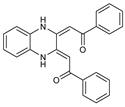 | 9 (20) | 7 (40) | 22 (80) |
| 57 |  | 9 (60) | 15 (120) | 15 (180) |
| 58 |  | 17 (60) | 17 (120) | 19 (180) |
| 59 | 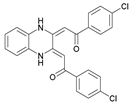 | 21 | 32 | 35 (180) |
| 60 |  | 15 (34) | 31 (67) | 33 (134) |
| 61 |  | 29 (18) | 31 (36) | 51 (72) |
| ID | Structure | Linear Growth-Inhibitory Rates (%) | Sporulation Inhibitory Rates (%) |
|---|---|---|---|
| 62 |  | 3.02 ± 0.96 | −5.85 ± 0.04 |
| 63 |  | −1.59 ± 0.05 | 16.36 ± 0.2 |
| 64 |  | 2.7 ± 0.16 | −34.79 ± 0.72 |
| 65 |  | −0.16 ± 0.02 | 21.94 ± 0.26 |
| 66 |  | 17.01 ± 0.96 | 30.62 ± 0.5 |
| 67 |  | 2.3 ± 0.29 | −77.59 ± 2.64 |
| 68 |  | −1.41 ± 0.3 | −61.05 ± 1.34 |
| 69 |  | −14 ± 0.05 | −48.72 ± 2.35 |
| ID | Structure | M.I.C. | |
|---|---|---|---|
| μg/mL | μM | ||
| 70 |  | 10 | 33.06 |
| 71 |  | 5 | 11.94 |
| 72 |  | 10 | 32.85 |
| 73 |  | 20 | 47.56 |
| ID | Structure | M.I.C. | |
|---|---|---|---|
| μg/mL | μM | ||
| 74 |  | 2.5 | 8.05 |
| 75 |  | 5 | 11.73 |
| 76 |  | 2.5 | 8.08 |
| 77 |  | 40 | 94.7 |
| 78 |  | 2.5 | 7.05 |
| 79 |  | 5 | 10.63 |
| 80 |  | 40 | 123.84 |
| 81 |  | 80 | 182.14 |
| ID | Structure | MIC (μg/mL) |
|---|---|---|
| 82 |  | 0.10 |
| 83 |  | 0.90 |
| 84 |  | 0.02 |
| 85 |  | 0.25 |
| 86 |  | 0.30 |
| 87 |  | 0.04 |
| 88 | 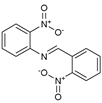 | 0.04 |
| 89 |  | 0.12 |
| 90 |  | 0.25 |
| 91 |  | 0.20 |
| 92 |  | 0.08 |
| 93 |  | 0.04 |
| ID | Structure | MIC (mg/L) |
|---|---|---|
| 94 | 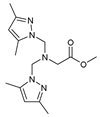 | - |
| 95 | 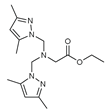 | - |
| 96 | 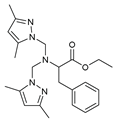 | 17 |
| 97 | 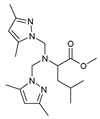 | 15 |
| 98 |  | 0.3 |
| 99 | 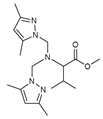 | 10 |
| 100 |  | 0.5 |
Publisher’s Note: MDPI stays neutral with regard to jurisdictional claims in published maps and institutional affiliations. |
© 2022 by the authors. Licensee MDPI, Basel, Switzerland. This article is an open access article distributed under the terms and conditions of the Creative Commons Attribution (CC BY) license (https://creativecommons.org/licenses/by/4.0/).
Share and Cite
Kaddouri, Y.; Benabbes, R.; Ouahhoud, S.; Abdellattif, M.; Hammouti, B.; Touzani, R. An Insight into All Tested Small Molecules against Fusarium oxysporum f. sp. Albedinis: A Comparative Review. Molecules 2022, 27, 2698. https://doi.org/10.3390/molecules27092698
Kaddouri Y, Benabbes R, Ouahhoud S, Abdellattif M, Hammouti B, Touzani R. An Insight into All Tested Small Molecules against Fusarium oxysporum f. sp. Albedinis: A Comparative Review. Molecules. 2022; 27(9):2698. https://doi.org/10.3390/molecules27092698
Chicago/Turabian StyleKaddouri, Yassine, Redouane Benabbes, Sabir Ouahhoud, Magda Abdellattif, Belkheir Hammouti, and Rachid Touzani. 2022. "An Insight into All Tested Small Molecules against Fusarium oxysporum f. sp. Albedinis: A Comparative Review" Molecules 27, no. 9: 2698. https://doi.org/10.3390/molecules27092698
APA StyleKaddouri, Y., Benabbes, R., Ouahhoud, S., Abdellattif, M., Hammouti, B., & Touzani, R. (2022). An Insight into All Tested Small Molecules against Fusarium oxysporum f. sp. Albedinis: A Comparative Review. Molecules, 27(9), 2698. https://doi.org/10.3390/molecules27092698









